Tom's Guide Verdict
If you want high-quality photos but don't want to lug a DSLR or mirrorless camera, the well-crafted RX100 III is the camera for you.
Pros
- +
Lovely photos with plenty of detail
- +
high-quality OLED viewfinder
- +
clean low-light photos
- +
solid, all-metal chassis
- +
extremely compact
Cons
- -
Sluggish autofocus
- -
occasional autoexposre glitches
- -
jerky HD video at 24fps
- -
pricey
Why you can trust Tom's Guide
Sure, cellphone cameras are getting really good. But sorry, they still don't cut it for images more than about 3 inches across, especially in less-than-perfect lighting. On the other hand, a DSLR or a slightly smaller mirrorless camera is a commitment. You don't just happen to have one of those bulky gadgets in your pocket at all times. In fact, you may never fit one in your pocket.
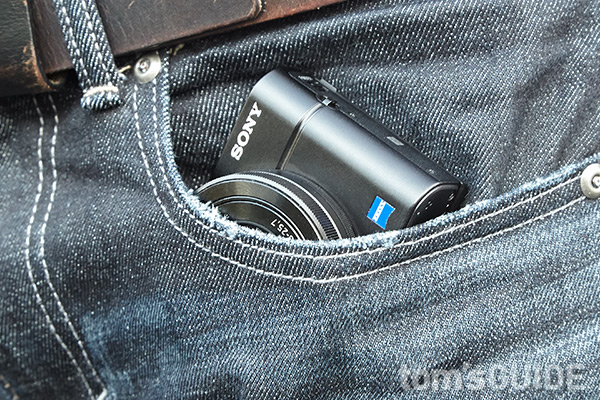
That's why I've been giddy to try Sony's new $800 Cyber-shot RX100 III. In contrast to its giant name and large price, this 20.1MP cam is quite petite. It's a rather tight fit for a skinny jeans pocket, but it fits pockets in most pants or jackets, or in a purse or backpack. Yet this mini shooter promises something very close to DSLR/mirrorless camera quality, and it mostly delivers on that promise.
Design: Built like a (tiny) weapon
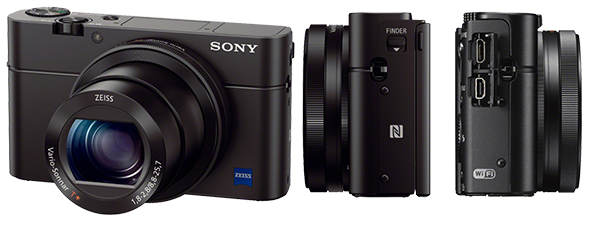
With a metal chassis and 10.2 ounces of heft, the RX100 III is a little brute that feels far more durable than nearly any compact camera not specifically rated as "rugged." Its various buttons and knobs are nearly flush-mounted, so there's almost nothing to snag when you jam the camera in a big pocket or toss it in a bag.
MORE: DSLR vs. Mirrorless Cameras: Which Is Better for You?
The size is a scosche short of ideal. The main slab of the camera's body measures 1.4 inches thick. But out of the front, a lens base protrudes an inconvenient 0.6 inches, which makes difficult to squeeze into tight pockets or makes it lumpy in others. Still, it's worth the trade-off for the excellent 2.9X, 24mm-70mm (full-frame equivalent) zoom lens that pops out when you turn the camera on.
Viewfinder and screen: Bright and sharp
The piece de resistance of the RX100 III, and the main physical feature that distinguishes it from its predecessor, is a 0.39-inch, 800 x 600 OLED viewfinder that pops up from the top left of the camera when you press a button. In our experience, a good OLED is a worthy substitute for the optical viewfinder of a DSLR. This eyepiece, though small, is no exception. You can frame photos under blinding sunlight and still get a sharp preview of your shot (or playback immediately afterwards).
The 3-inch LCD is bright enough to see in sunlight, which allowed me to take stealthy candid shots in a park by holding the camera down at my stomach. The screen tilts down about 45 degrees for holding the camera above your head. And new to this RX100 model, the display tilts up 180 degrees so you can see it while shooting selfies. Sony continues its odd tradition of not using touch screens with this camera. But the directional pad and wheel to the right of the screen, along with several programmable buttons, allowed me to easily navigate the onscreen menus.
Bright-light image quality: Worthy of a "real" camera
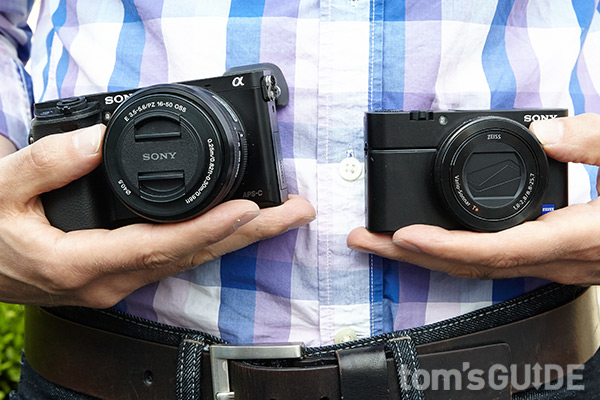
The photos I took with the RX100 III were gorgeous, even compared to those from Sony's a6000 mirrorless camera, which I brought along for comparison. By bright light, they were nearly indistinguishable. You can see the comparable quality in these daytime photos of Manhattan's Washington Square Park. The exposure and color are virtually identical, not surprising, since both cameras use the Bionz X, Sony's latest image processor.
For all intents and purposes, the photos are also equally sharp, even at 100-percent magnification. This is despite the fact that the RX100 III's 1-inch image sensor is just 35 percent the size of the APS-C sensor found in the a6000 and most other mirrorless and DSLR cameras (click the images for high-resolution detail).
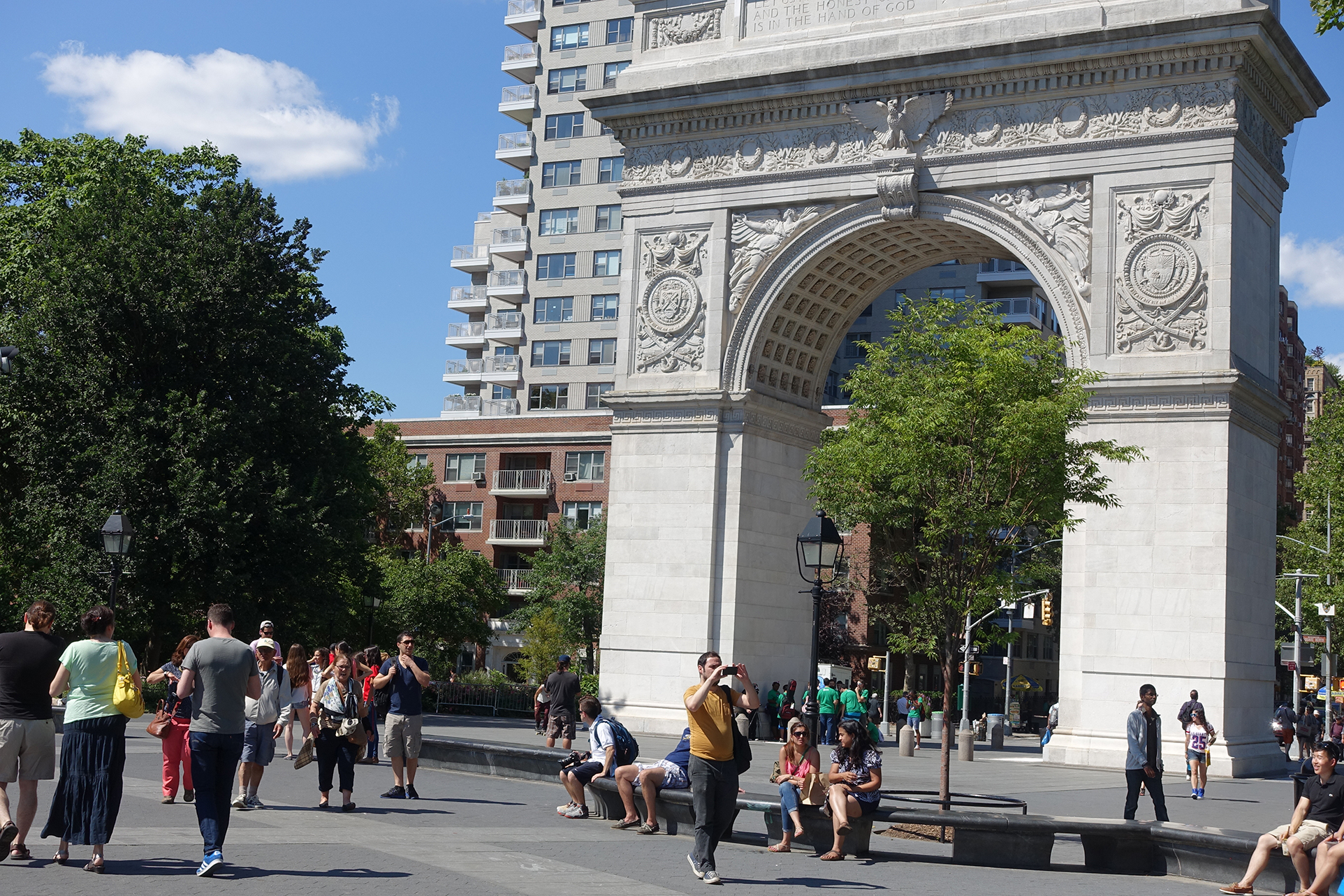
RX100, ISO 125, f/6.3, 1/500 sec. 50mm (full-frame equivalent)
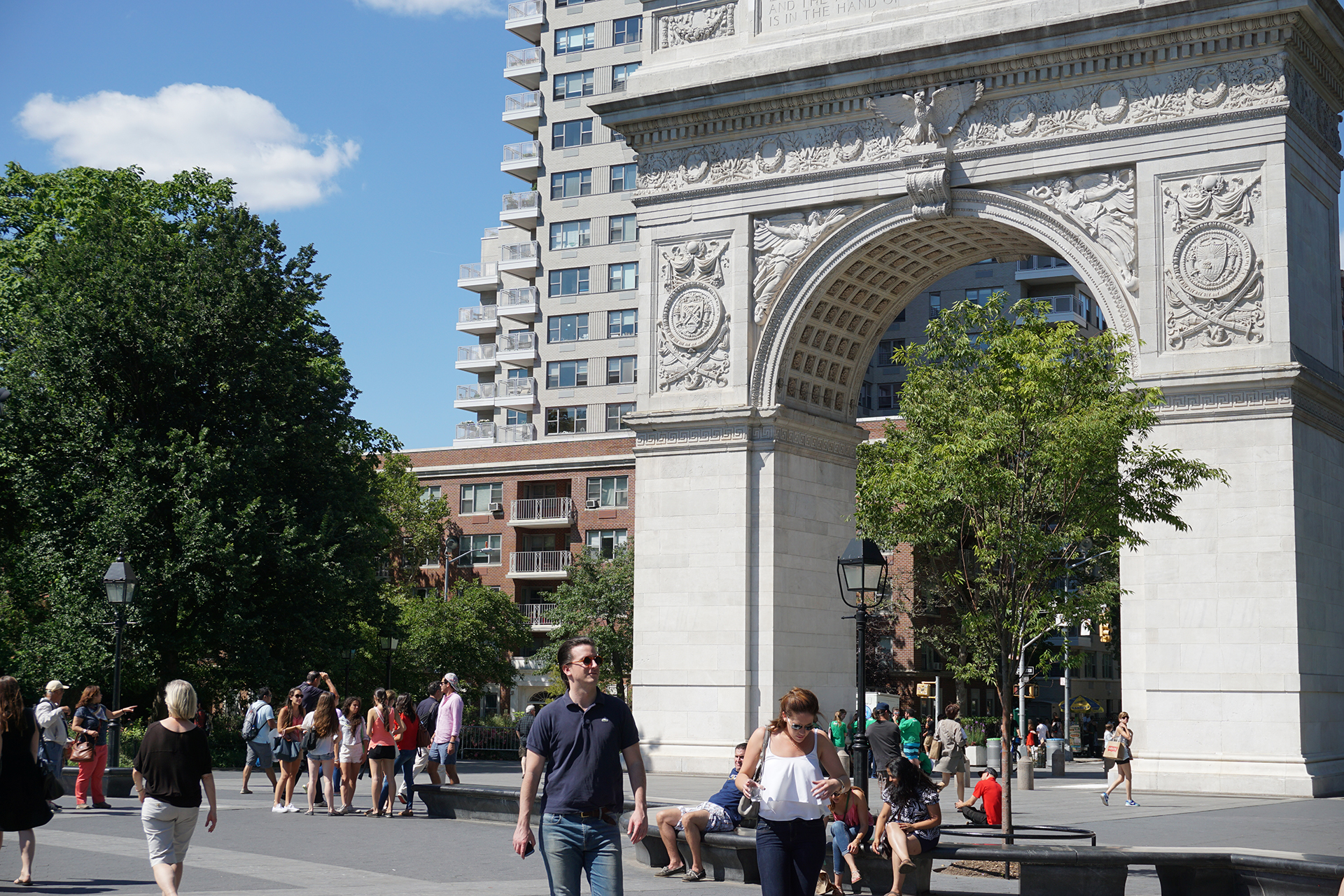
a6000 photo, ISO 100, f/8, 1/320 sec. 51mm (full-frame equivalent)
The high image-quality is also thanks to the excellent Zeiss 2.9X zoom lens, with an extra large maximum aperture of f/1.8 (at the wide end) to f/2.8 (starting at 34mm). This non-removable lens is far better than the bundled kit lenses that many people never take off their DSLR or mirrorless cameras. The a6000's optional kit lens, for example, offers a comparable 3X zoom range but also the industry-standard f/3.5-f/5.6 range of max apertures. This limits the ability to create very shallow depth of field, as you can see in the clarity of the numbers in two images: One taken with the RX100 III at full telephoto and its maximum aperture of f/2.8, vs. the same photo taken with the lens stopped down to f/5.6.
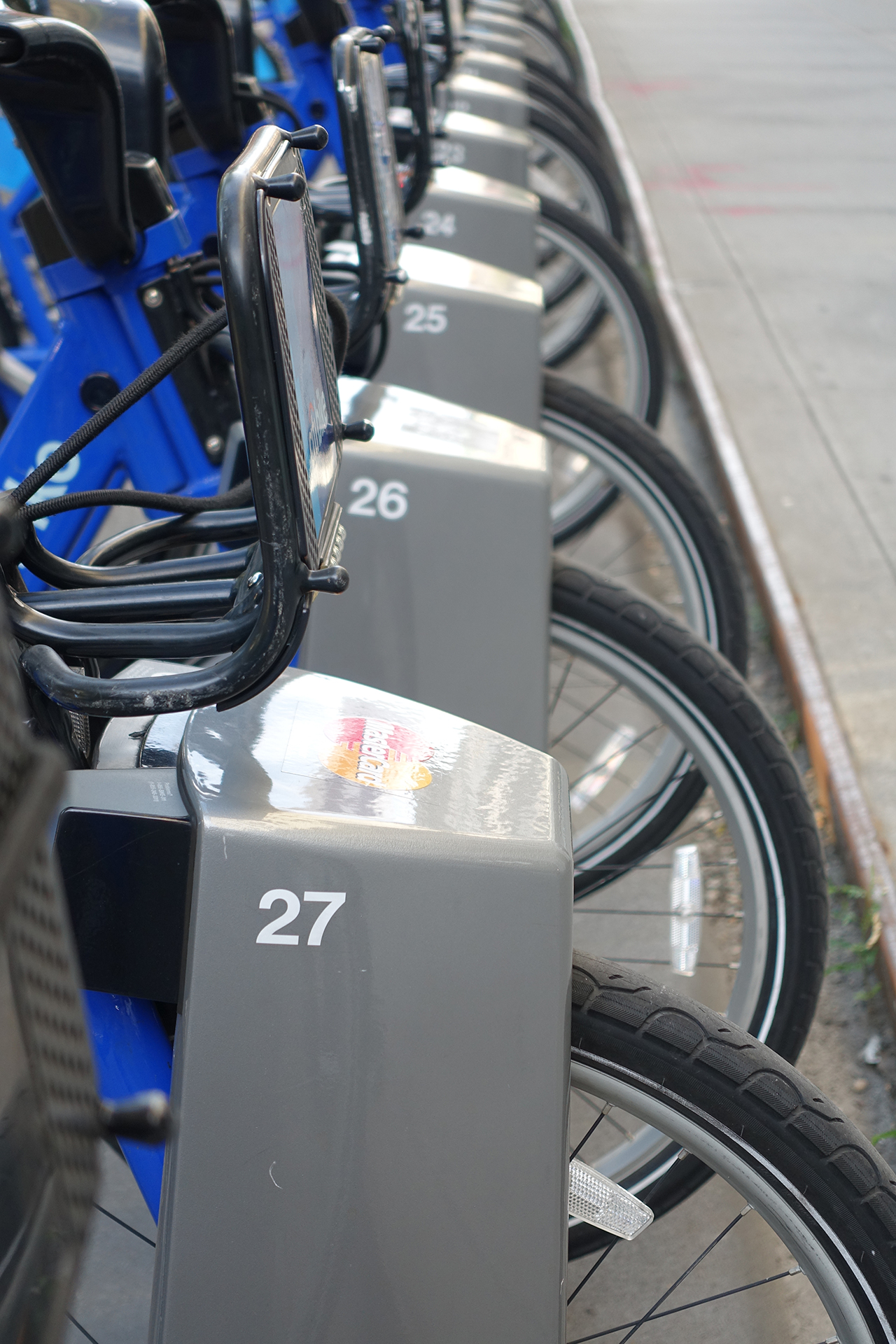
RX100 III shallow depth of field, ISO 160, f/2.8, 1/80 sec. 25.7mm (full-frame equivalent)
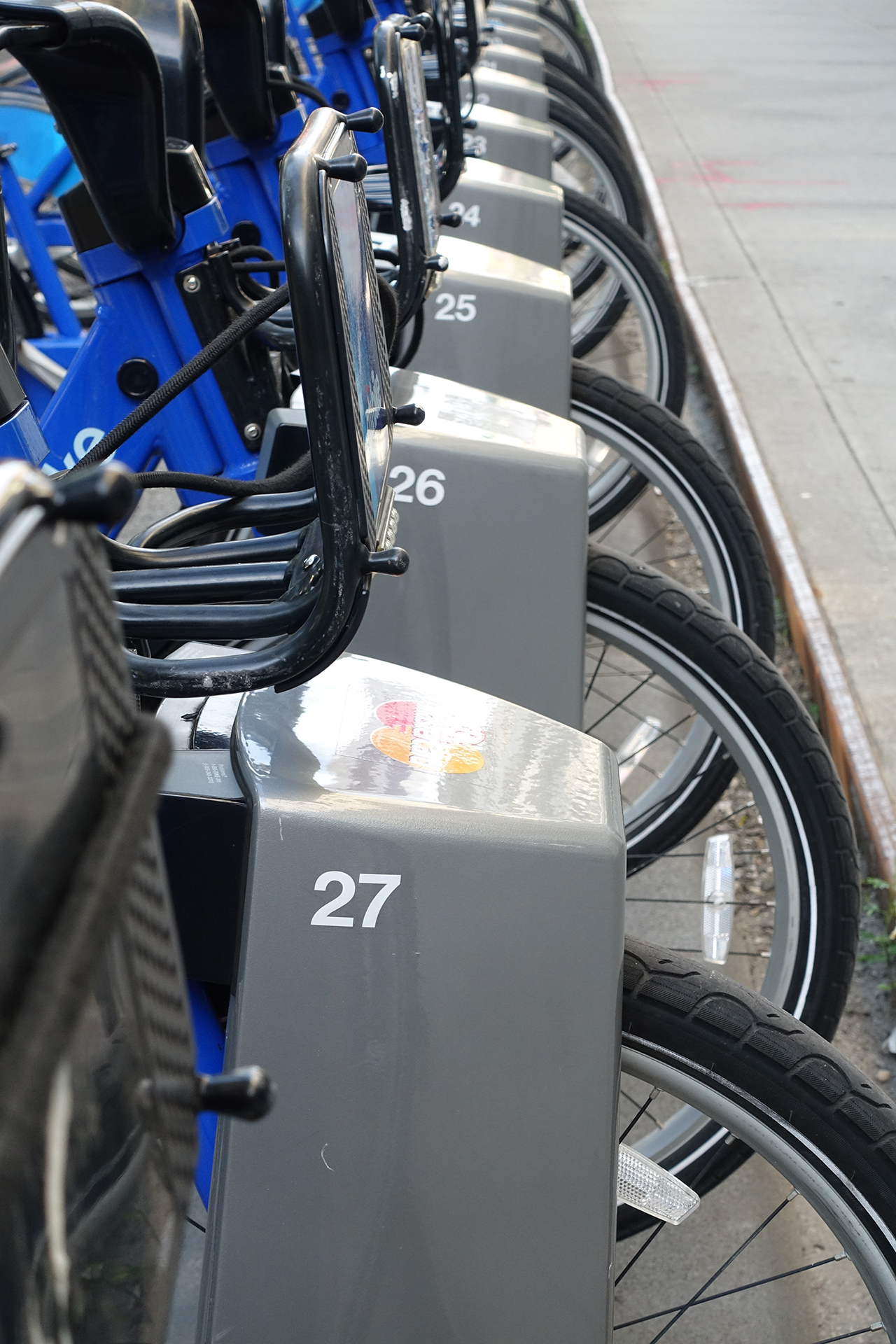
RX100 III deeper depth of field, ISO 500, f/5.6, 1/80 sec. 25.7mm (full-frame equivalent)
You will see the effect even more at night, though: An f/2.8 aperture allows in twice as much light as an f/5.6. (You'll see an example of larger aperture low-light performance farther down.) Sony doesn't make an exactly comparable lens for its mirrorless cameras. The nearest match, the Vario-Tessar T* E 16-70mm F4 ZA OSS, lists for $1,000. Add that to the $650 price of the a6000 body, and you are spending about twice as much to get about the same lens capability.
MORE: Street Photography Lessons: How to Get the Best Shot
To show that the favorable comparison is not a fluke, here's another set of images, including close-ups that show how the cameras handle a range of skin tones almost identically.
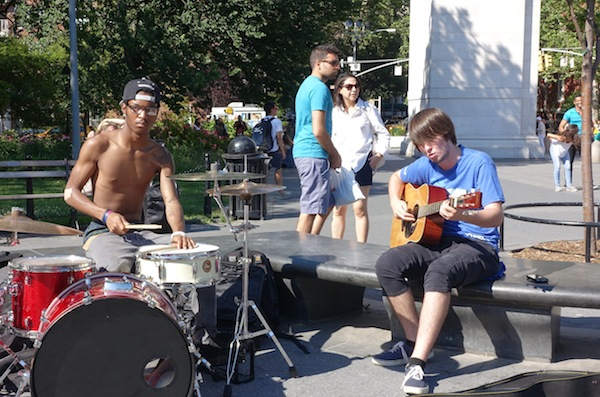
RX100 III photo, ISO 125, f/9, 1/100 sec. 44mm (full-frame equivalent), cropped to better match Sony a6000 image composition, below
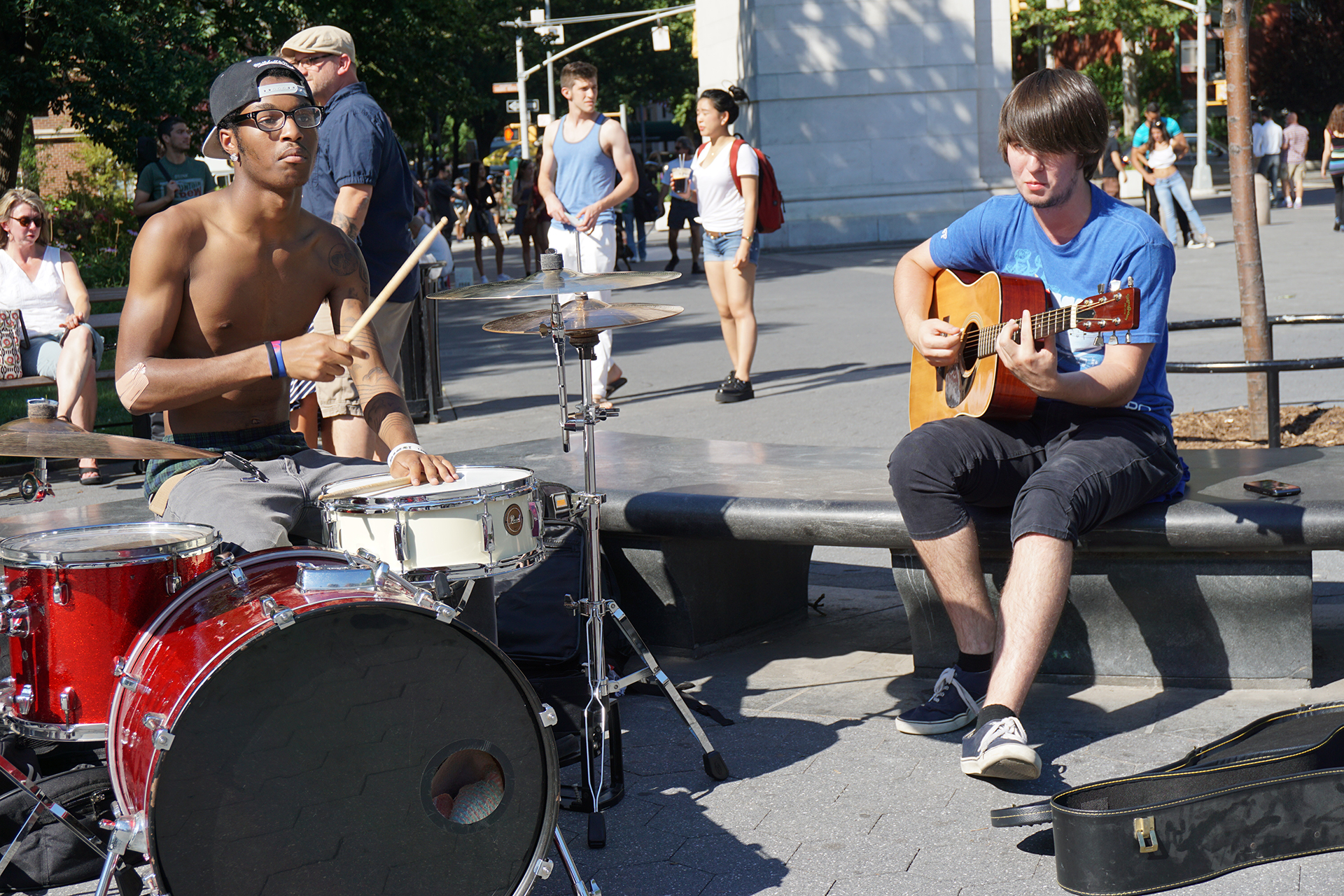
a6000 photo, ISO 100, f/6.3, 1/320 sec. 54mm (full-frame equivalent)
Real-world impressions of the RX100 III's image quality jibe with our lab results using the Imatest image-analysis software to assess photos of a test pattern. The results showed that the RX100 III's zoom lens, set to 50mm, produced image quality comparable to mirrorless cameras such as the excellent Samsung NX30 and DSLRs such as the Nikon D5300 — when they were equipped with prime lenses of roughly the same focal length. These primes perform better than the 3X zoom kit lenses that come with the $1,000 NX30 and $900 D5300. So the RX100 III's zoom lens performs about as well as primes on larger cameras — pretty sweet.
Exposure: Inconsistent
When it works, the RX100 III's autoexposure is pretty effective, producing a good balance from light to dark, although it can blow out highlights like white T-shirts. However, in many cases, it judged wrong, even in a series of photos taken of the same setting within a second or two of each other— as in these two photos I caught of a woman striking poses in a fountain for her friend's camera. Note that focus is a bit soft, too, which we'll discuss later.
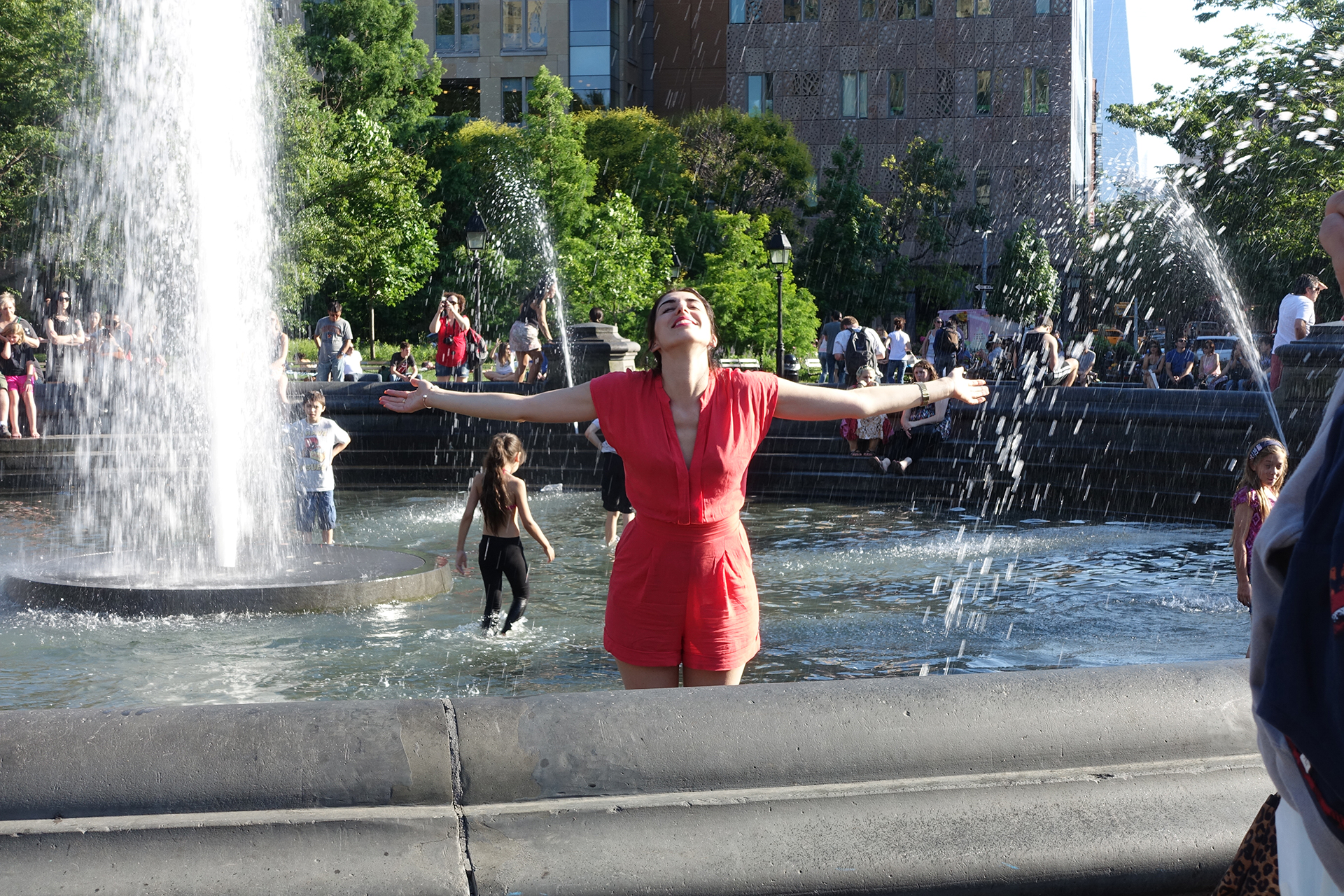
ISO 160, f/9, 1/80 sec. 61mm (full-frame equivalent)
I shot both photos on Aperture priority (f/9) and auto ISO. The camera adjusted the shutter speed and ISO very differently between the two.
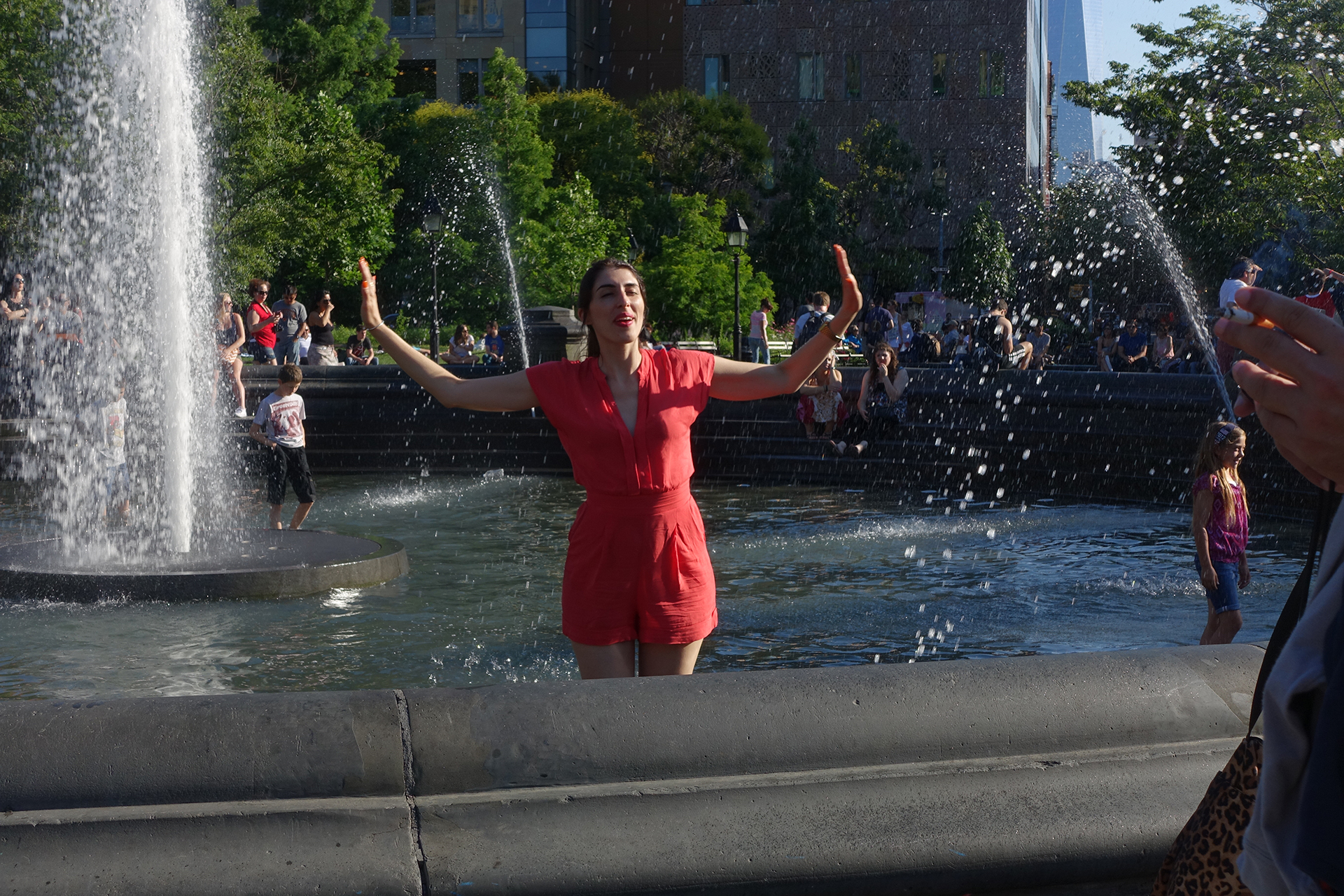
ISO 125, f/9, 1/200 sec. 61mm (full-frame equivalent)
Dynamic range and fill flash: Well calibrated
Like other Sony cameras, the RX100 III offers Sony's D-Range Optimizer (DRO) feature, which pulls out detail from shadows in high-contrast settings. DRO is enabled by default, which is the right call. The camera's HDR mode brings out more detail in light areas, but since HDR takes and combines several images, it can cause some blurring if you or your subjects move. So keep that in mind when choosing whether to use it.
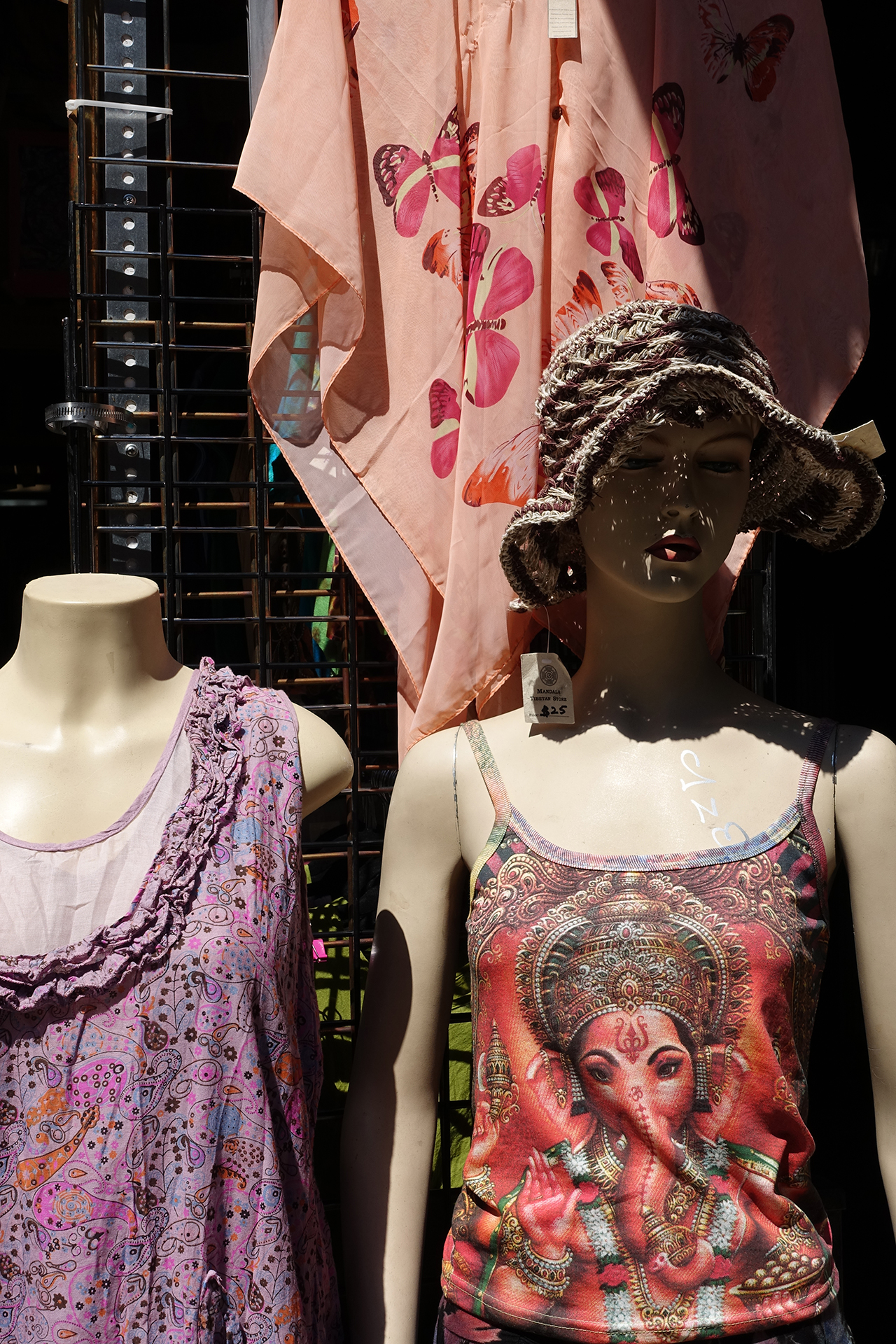
Without D-Range Optimizer
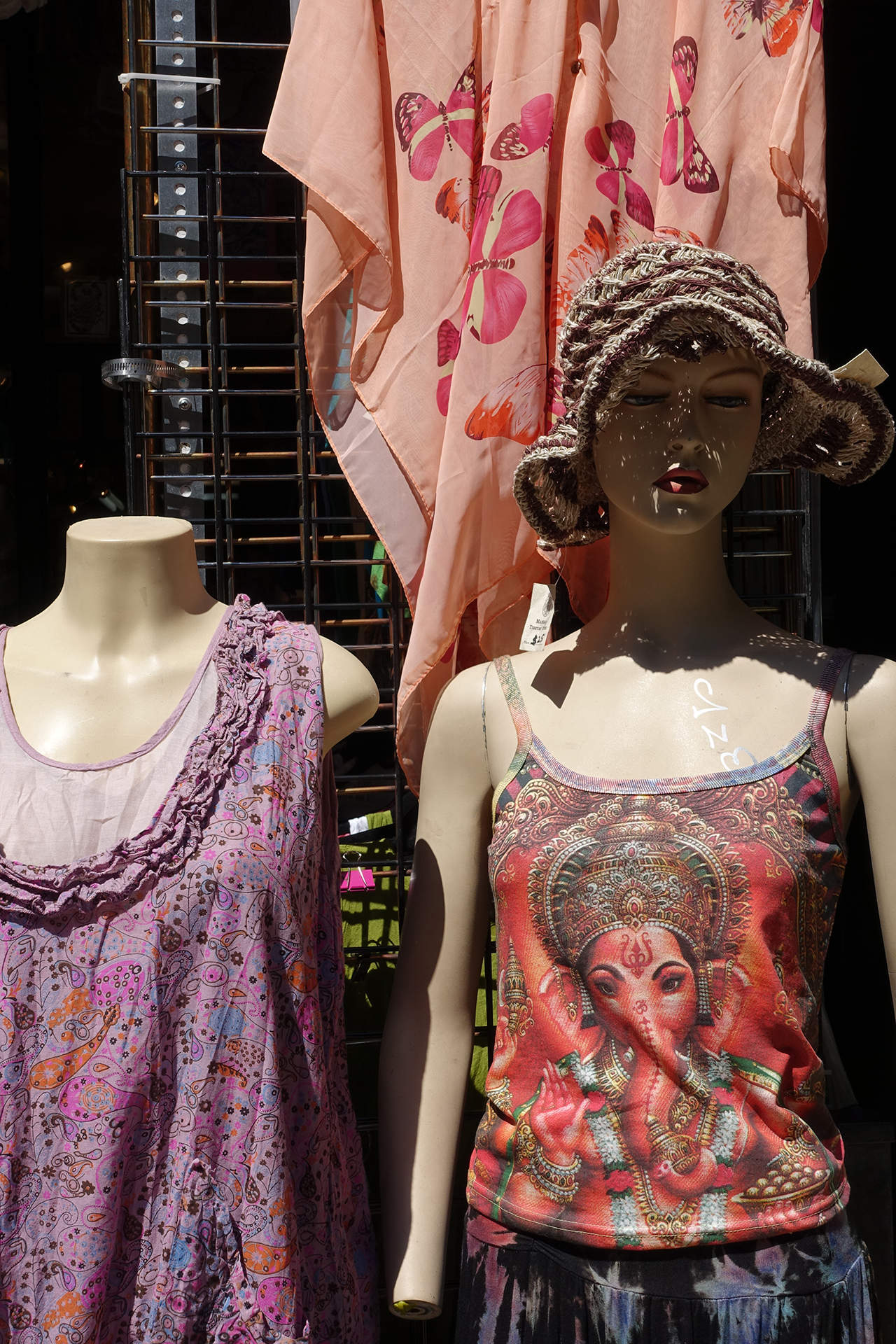
With D-Range Optimizer
The RX100 III's fill flash is an alternative to HDR in some conditions — powerful enough to brighten the mannequin's face under its hat without blowing out the brighter parts of the scene.
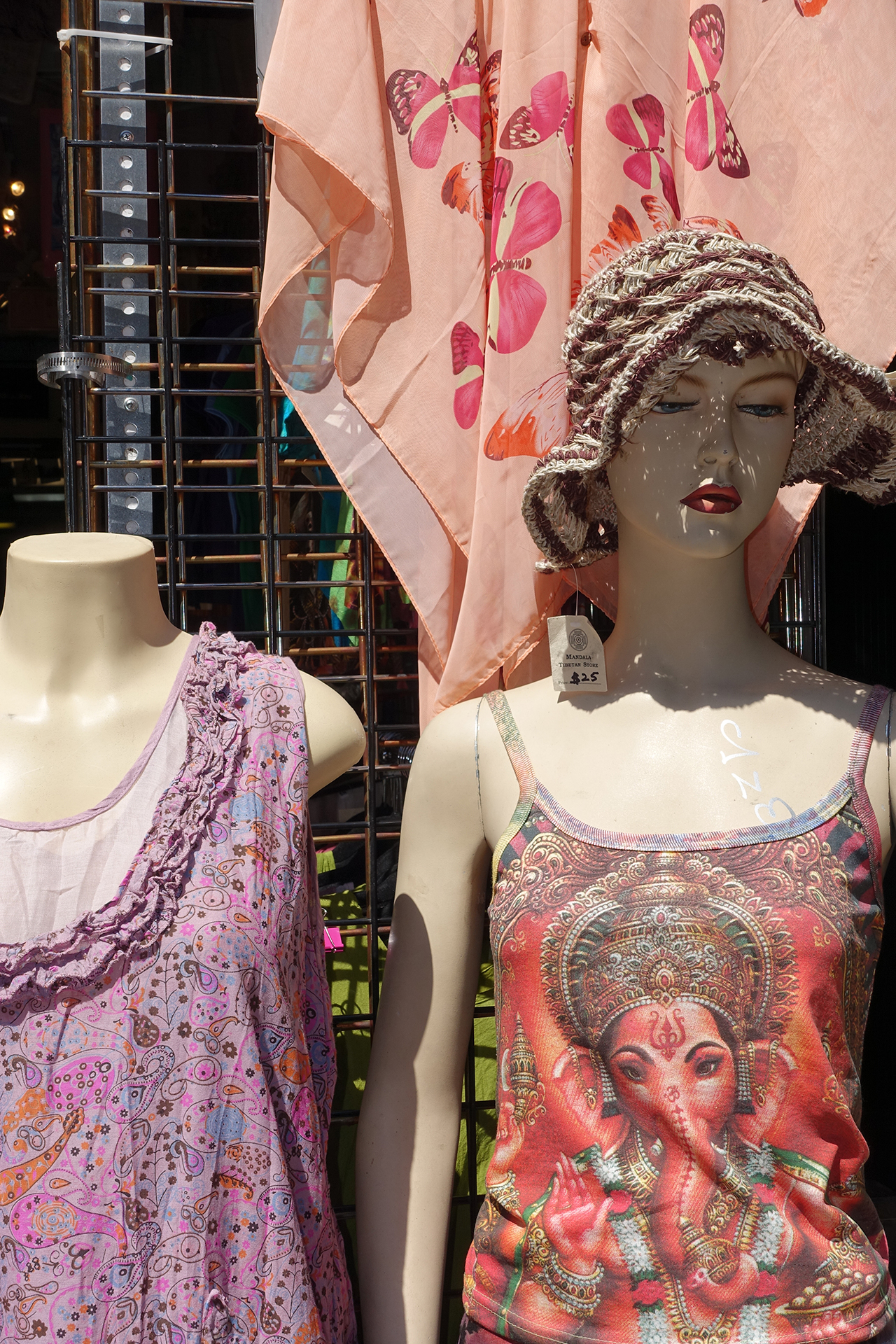
With fill flash
Low-light photo results: Surprisingly clean
Common wisdom says that the bigger the camera (and sensor), the better the low-light performance. But once again, the RX100 III blurs lines. It doesn't quite match a full-size camera, but it comes close enough for virtually any scenario.
I photographed a neo-Gothic church by night at every ISO level to see how far we could push the camera before noise (graininess) or noise reduction startd to hurt image quality. We found that detail held up well as high as ISO 2000, which is impressive for any camera.
We won't bore you with all those pictures. Instead, you can see the low-light performance in a photo of a jazz band in a dark theater shot at ISO 2000. This level of light sensitivity allowed me to capture the singer, who was bathed in spotlight; the guitar player, who was catching a bit of her light; and the bass player, who was in deep shadow. Up to at least half-size (which is huge for a 20MP photo), the picture looks just fine.
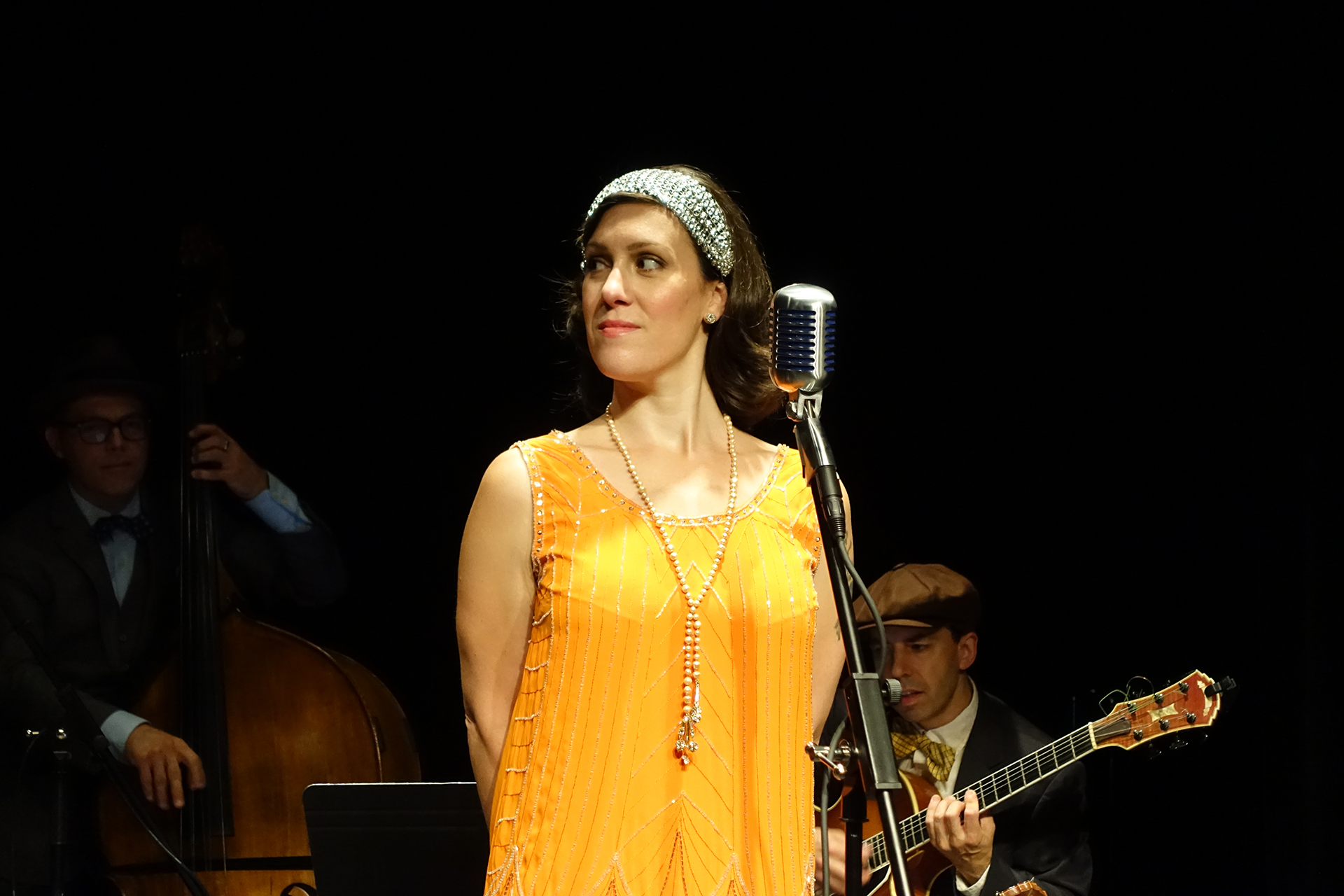
ISO 2000, f/3.2, 1/80 sec., 70mm
Sony attributes this high performance to what it calls an Exmor R CMOS sensor, a term you will see all over the camera's marketing. Here's the translation: Exmor R is Sony's name for backside illuminated (BSI) sensor technology, which several camera companies use. In short, it's a reconfiguration of a CMOS image sensor that allows the pixels to have a greater surface area than they would with traditional technology, which helps make up for a smaller sensor.
The lens's larger aperture helped, too. We shot this at f/3.2 at full telephoto of 70mm. A typical kit lens would only be able to go down to f/5.6 at that length.
MORE: A Digital Camera Glossary
Some cameras with larger sensors can still do better, however. The a6000, in comparison, produced a good-looking image of a dancer under the poorer lighting of lampposts at a very high ISO of 12,800. The a6000 is one of the best low-light performers we have seen, but based on lab tests and our own observations, the RX100 III also trails most other mirrorless and DSLR cameras at much higher ISOs, above about 3,200. Still, for such a small sensor and camera, this low-light performance is fantastic.
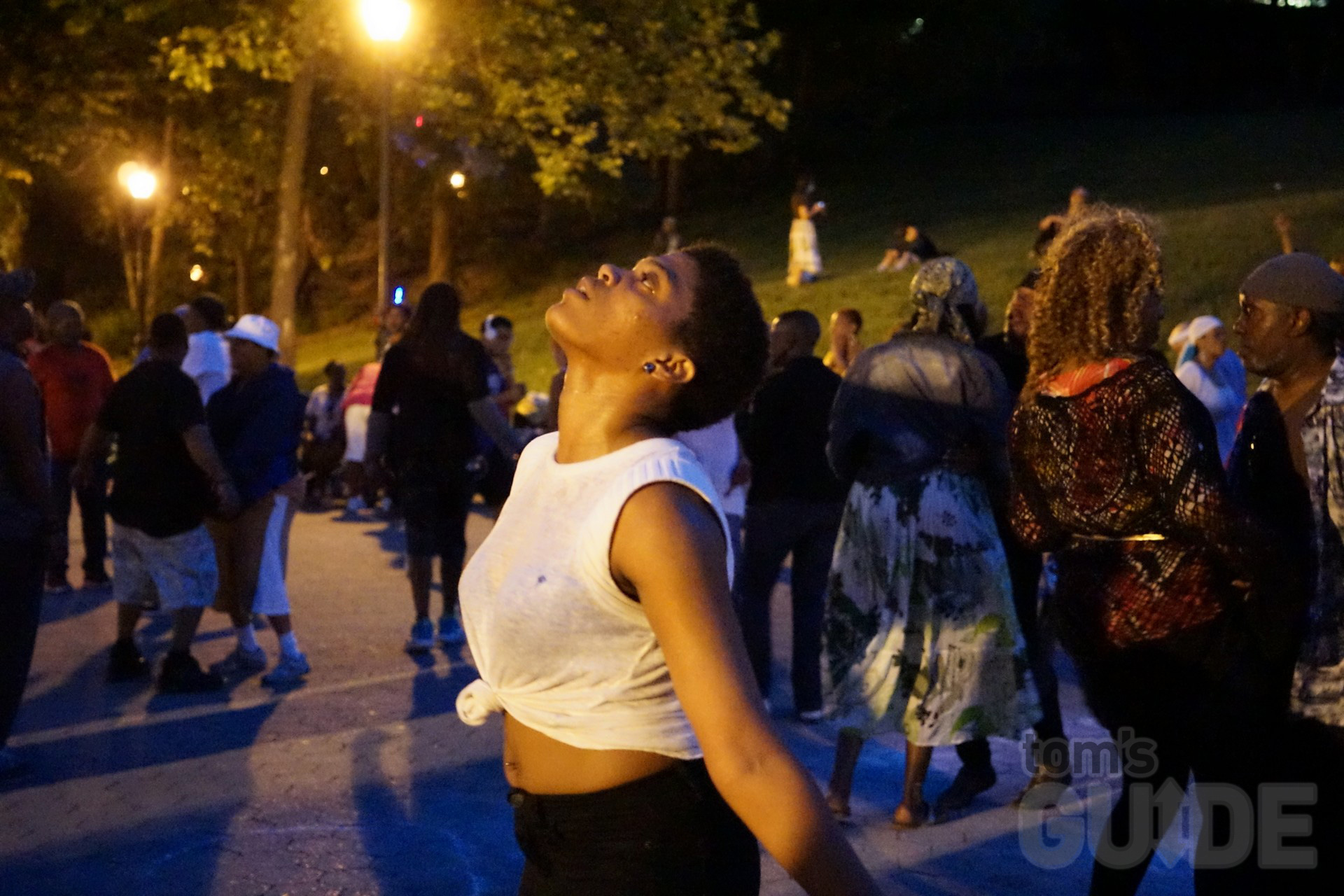
Sony a6000 photo, ISO 12,800, f/2.8, 1/30 second. Shot with Sony 35mm prime lens (52.5mm full-frame equivalent)
Autofocus and speed: Main weak spot
The big weakness in the sensor is that it lacks phase-detection autofocus points, which generally allow cameras to focus much faster than the contrast-detection technology found in almost all compact and phone cameras. With just 25 contrast-detection points, the RX100 III generally locks on its subjects under bright light. But it failed more than we would have expected, given our experience with Samsung's NX mini, an almost-pocket-sized interchangeable-lens camera with a 1-inch sensor and only contrast detection.
By bright light, the NX mini nailed focus almost every time, and almost as quickly as a camera with phase detection. (The NX mini scored low in our review mainly because of distorting 9mm "selfie" lens that came with our review unit. We're waiting for Samsung to send the version with the 3X zoom lens.)
MORE: Camera Wars: Why Autofocus Is the New Megapixel
Even a portrait of a skateboarder standing still came out blurred in one take, but sharp on another. (Click for larger images to better see the difference.)
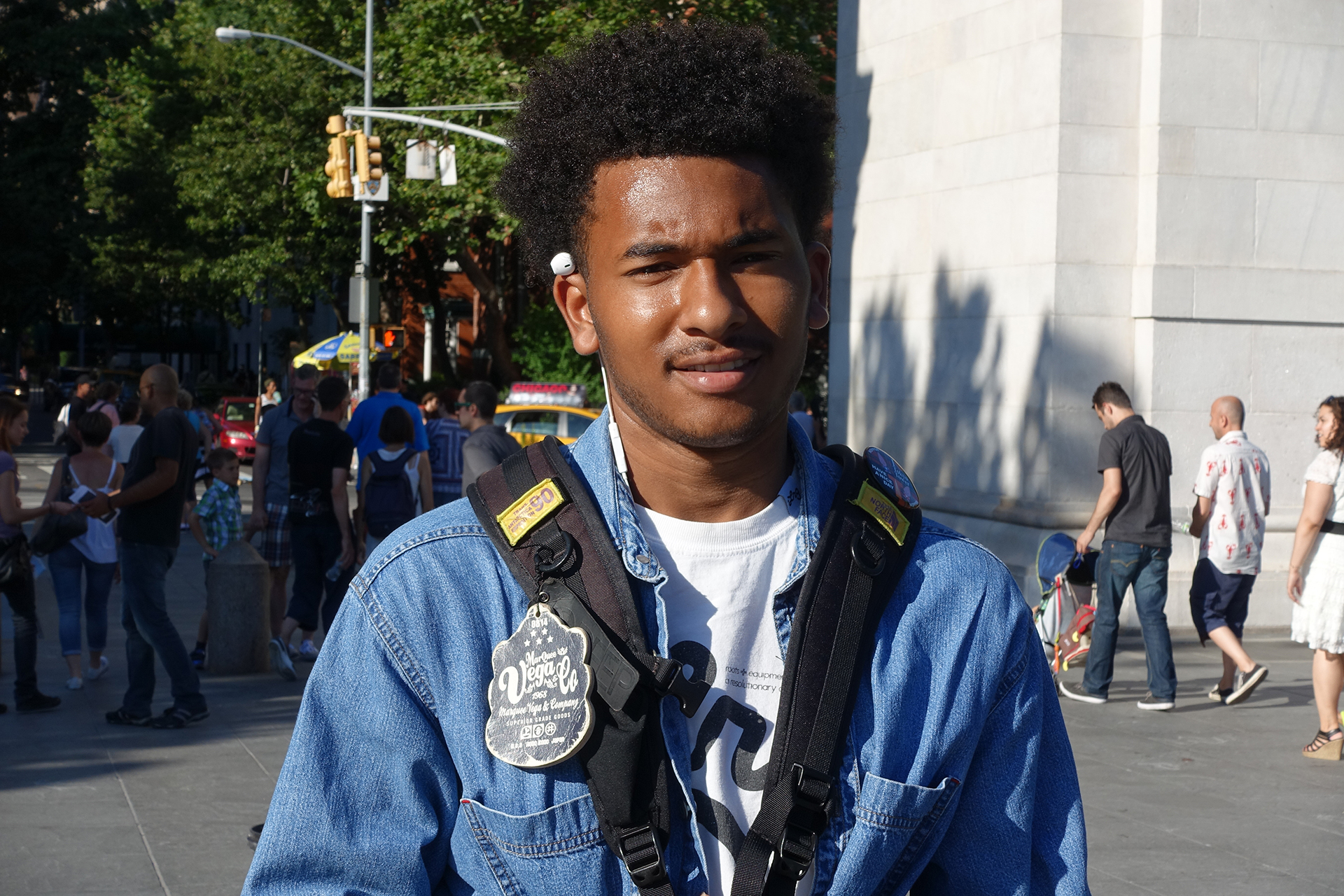
ISO 125, f/9, 1/200 sec., 69mm
The camera settings were identical, and the 1/200 second shutter speed was more than enough to eliminate motion blur, especially since he wasn't moving.
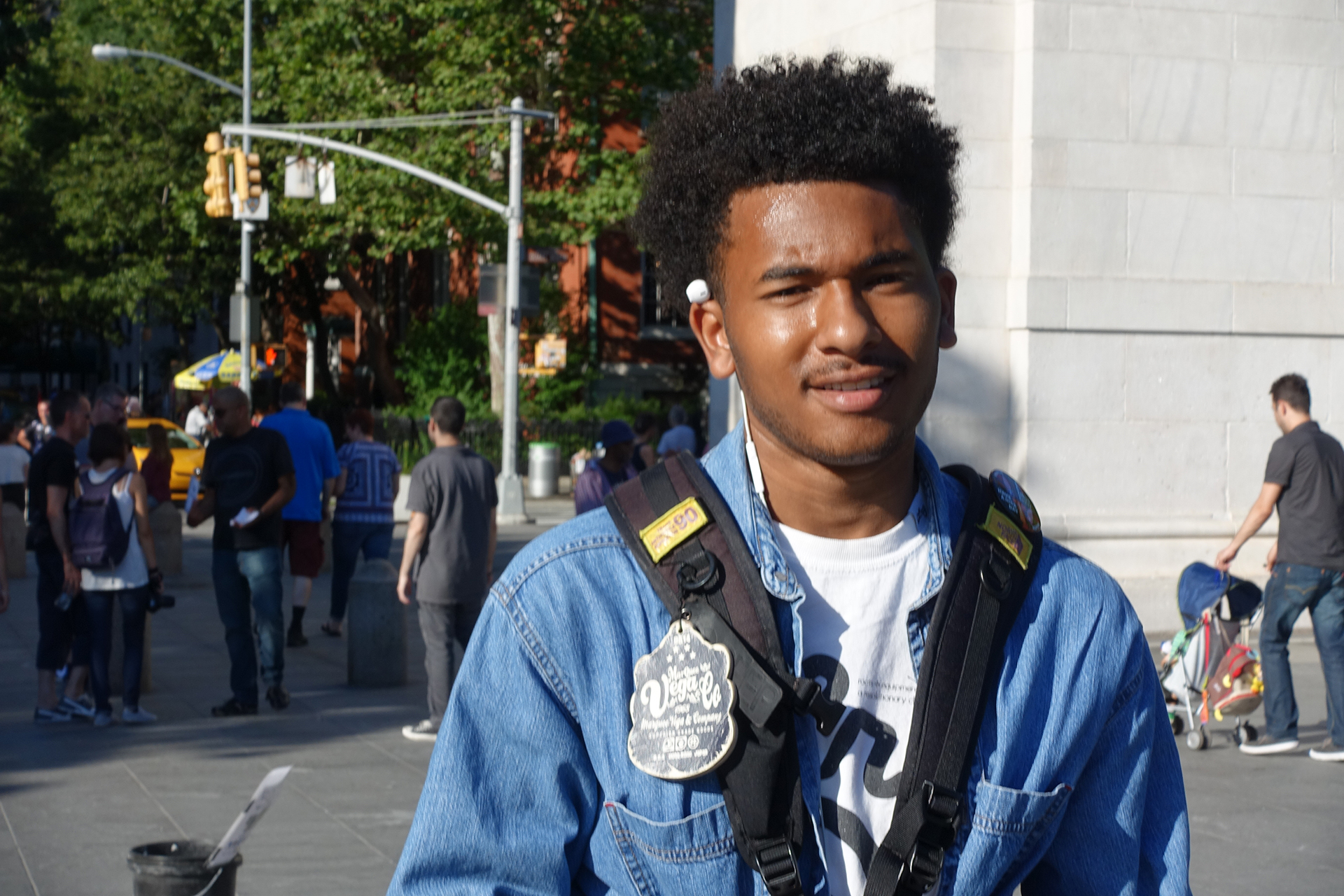
ISO 125, f/9, 1/200 sec., 69mm, Aperture priority
If the camera does autofocus well, or if you use manual focus, you can take advantage of the RX100 III's superfast 10fps continuous shooting (faster than almost any DSLR). Using this to shoot skateboarders in the park, I was able to pick out a fairly crisp frame of one in midair.
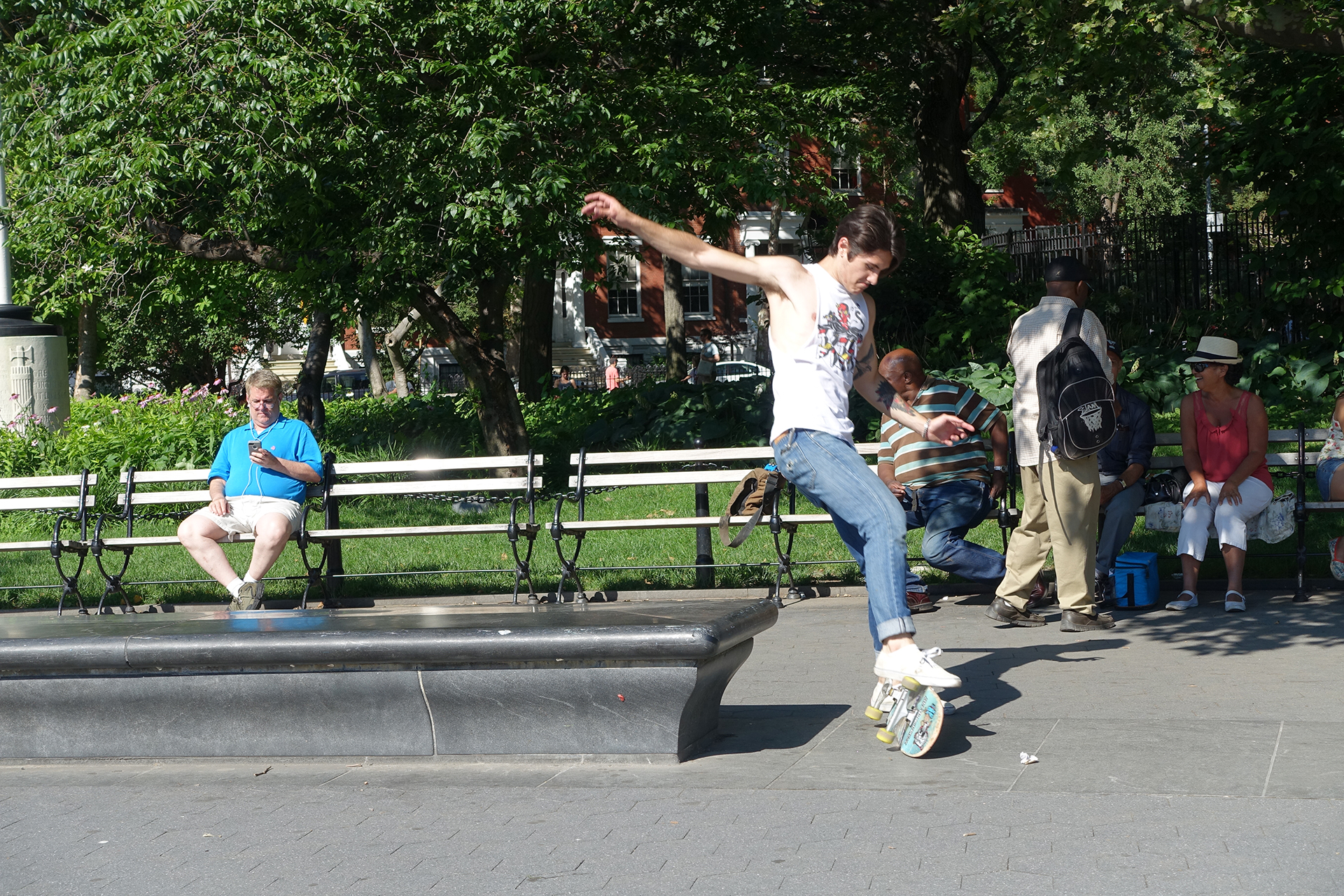
ISO 125, f/5, 1/400 sec., 69mm, Shutter priority
The RX100 III's autofocus wasn't much worse under low light, however, where it's roughly equal to the NX mini. Bottom line on autofocus: For landscapes, cityscapes, still-lifes or posed photos, the RX100 III will do the job fine. For sports, babies or candids, you may be disappointed.
Bright-light video quality: Very good at 60p
You won't be making movies with RX100 III, but it can shoot video that's perfectly fine for online posting. A clip of a piano player in the park shot at 1080p and 60 frames per second showed smooth movement, as you can see in people walking by in the background. (Even many DSLRs, such as the video-centric Canon 70D, can't shoot at 60p.) The RX100 III has face-detection autofocus, which generally locked on the player's face, although it occasionally drifted in some of the many clips we shot. (Depending on your Internet connection, the videos may not play as smoothly as they are capable of.)
The air was perfectly still in this segment, but in others with even a slight breeze, the built-in mics picked up a lot of wind noise. That was also the case with the a6000, but that camera has Sony's interface shoe for mounting a higher-quality external microphone. Sony had to ditch the interface shoe to make room for the RX100 III's popup viewfinder, and the camera also lacks a microphone input jack. So you're stuck with the built-in mics.
MORE: How to Shoot Great Video
The RX100 III has a manual focus mode, which I used to optimize the focus when photographing some skateboarders in the same park, producing pretty sharp results.
The RX100 III can also shoot video at 24fps — the rate favored by movie directors because of the artistic blur it lends to motion. Sony's a6000 handles 24fps brilliantly, but that setting resulted in a slight stuttering effect every time I tried it with the RX100 III, as you can see in another video of the same skateboarders.
Low-light video quality: Good autofocus
True to its still-image performance, the RX100 III shot very good low-light video. It also maintained focus on the subject pretty well, as you can see in this 60fps clip of a contortionist showing off for the camera in a park at night. (The white balance is also pretty good for the setting.)
We saw the same stuttering effect with 24p video at night. But if the light is really low (lower than in our test), you may want to use 24p anyway, as its slower frame rate allows longer shutter speeds when light is scarce — better a slightly choppy video than one too dark to see.
Controls
As it does with its other cameras, Sony allows you to reprogram most of the buttons and dials on the RX100 III (including a dedicated Custom button). With the defaults and some fiddling, I was able to get to all my favorite settings, such as exposure mode, shutter speed, aperture and exposure compensation without having to dig into menus. I was able to arrange others, such as focus points, on a customizable menu that pops up when you press the Fn button on the back of the camera.
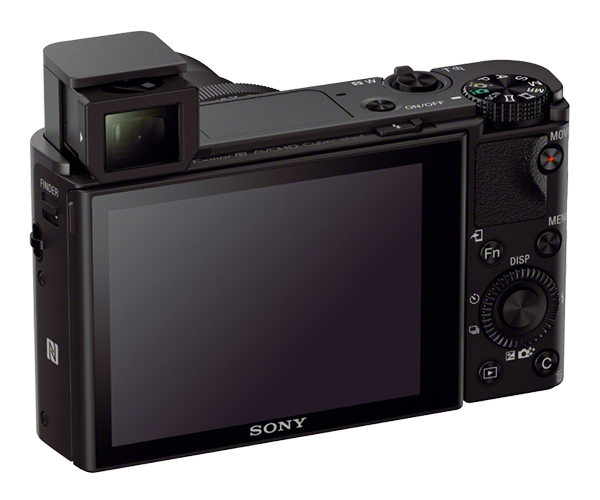
One of the main menu tabs provides access to the RX100 III's wireless functions. It transfers photos to your smartphone by acting as a hot spot that your phone connects to over Wi-Fi. Or you can transfer photos to a computer if it and the RX100 III are connected to the same Wi-Fi network. You can set the camera to automatically push photos to your mobile or select either the camera- or the phone-specific photos to send over.
The standout control feature is a smoothly turning adjustment ring around the base of the lens. Depending on the mode you are in (such as Aperture priority) and the preferences you set, you can use the ring to control aperture, shutter speed, zoom or manual focus. It's especially handy for precisely dialing in focus.
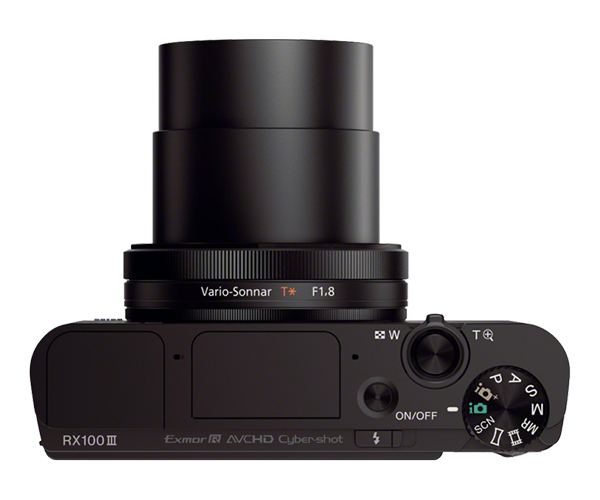
Considering how little space there is for controls, the RX100 III scores well in our test of the steps required to access key settings. (A score of 0 means there is a dedicated knob, button or dial, with no subsequent online menu.) The camera's ability to customize controls can reduce the number of steps, which we indicate in parentheses.
| Setting | Steps/button presses to access | Function |
| Shutter | 0* | Length of exposure |
| Aperture | 0* | Amount of light let in |
| ISO | 6 (2) | Light sensitivity |
| Focus Area | 6 (2) | Point or points used for focus |
| Light metering mode | 5 (2) | Part of image with optimized exposure |
| White balance | 6 (2) | Overall color cast of image |
| Exposure compensation | 1 | Set auto exposure to be darker or lighter |
| Wi-Fi sharing | 3 | Send images to smartphone, activate remote viewfinder |
| Video recording | 0 | Switch from photo to video and back |
| Play | 1 | View images or videos you've shot |
| Delete image | 2 | Erase photo from memory card |
| Photo capture resolution | 3 (2) | Amount of megapixels |
| Photo capture quality | 5 (2) | Amount of JPEG compression/detail, or RAW |
| Video capture resolution | 3 | Lines of resolution and frame rate |
| Video capture quality | 3 | Amount of compression/detail |
| Drive | 1 | Single photo, burst, timer, etc. |
*If in Manual mode or appropriate priority mode – Shutter priority or Aperture priority
Bottom line
The Sony RX100 III is one of those rare products that makes you step back and take a breath when you realize all it can do. In absolute terms, no, it can't replace a DSLR or large mirrorless camera in all circumstances — especially for action photography. But in many cases, and probably the ones most people encounter most of the time, the RX 100 III is a legitimate DSLR replacement. And its image quality is far better than that of even the best smartphone cameras. An old adage says that the best camera is the one you have with you. Considering its balance of quality and portability, the RX100 III could be the best camera for many photo enthusiasts.
Key Specs
Model name: Sony RX100 III
Megapixels: 20.9
Type: Fixed lens compact
Price: $800
Shots per sec: Up to 10fps continuous
Sensor type: 1-inch (35% of APS-C, 13% of full-frame)
Lens: 8.8-22.7mm (24mm-70mm, full-frame equivalent), f1.8-2.8
Rear screen: 3-inch LCD
EVF: 0.39-inch, 800 x 600 OLED
AF points and types: 25, contrast-detection
Shutter speed range: 1/2000-30 sec., photo
ISO range: 100-12,800, photo; 100-12,800, video
Main video resolutions/frame rates: 1980 X 1080 at up to 60fps progressive or interlaced, 30p, 24 p (AVCHD format); 1440 x 1080, 640 x 480 at 30fps (MPEG 4 format)
Video file formats: AVCHD, MPEG 4
Built-in flash: Yes
Hot shoe: No
Card type: Single slot:SD, SDHC and SDXC memory card; Memory Stick PRO Duo™/Pro-HG Duo
Ports: MicroUSB, micro HDMI
Shots per charge (CIPA): Approx. 320 (using LCD screen, no figure given for EVF)
Wireless capabilities:Wi-Fi, NFC
Image stabilization: Yes
Dimensions and weight: 4 x 2.3 x 1.6 inches; 9.3 ounces
Senior editor Sean Captain has been writing about photography for a decade and loves that his job requires him to go out and take pictures. Follow him @seancaptain and on Google+. Follow us @tomsguide, on Facebook and on Google+.
Sean Captain is a freelance technology and science writer, editor and photographer. At Tom's Guide, he has reviewed cameras, including most of Sony's Alpha A6000-series mirrorless cameras, as well as other photography-related content. He has also written for Fast Company, The New York Times, The Wall Street Journal, and Wired.
-
razor512 Poor manual controls, priced $10 more than the A6000 which has a far better image sensor (though the kit lens is slightly less sharp in the center as compared to the RX 100 III, the kit lens still overall provides more detail and less lens distortion.Reply
The RX100 III is priced in the upper range of APS-C sensor DSLR's while offering a lower resolution and a significantly smaller sensor and far worst high ISO performance.
Overall, this is a camera for someone who must have something that will fit in smaller pockets. (though I doubt anyone would actually do that because that always messes up the lens. the automated lens cover flaps are not very string and thus when in a pocket, they will rub against the lens if the lens area is facing your body, and if not, one small bump to your pocket area and you kill the lens.

